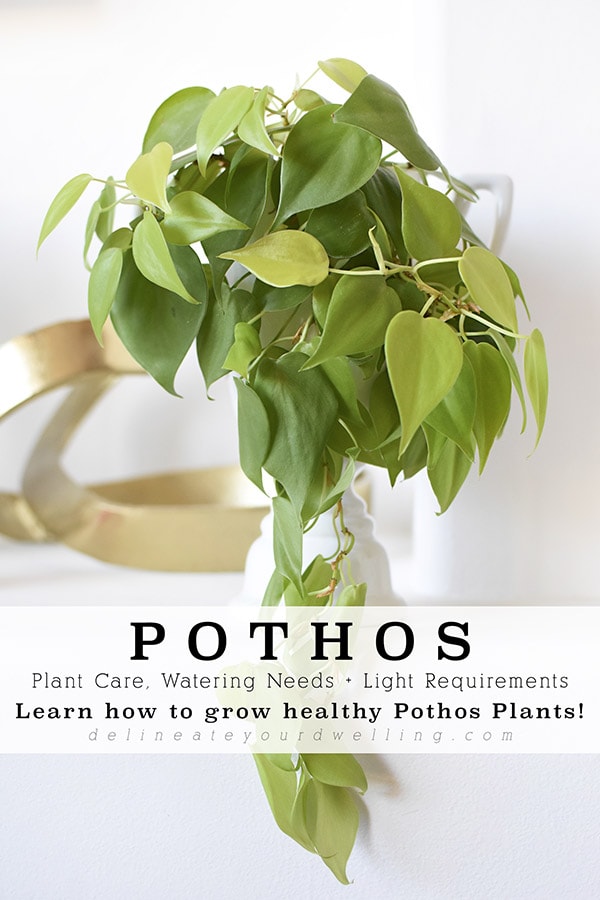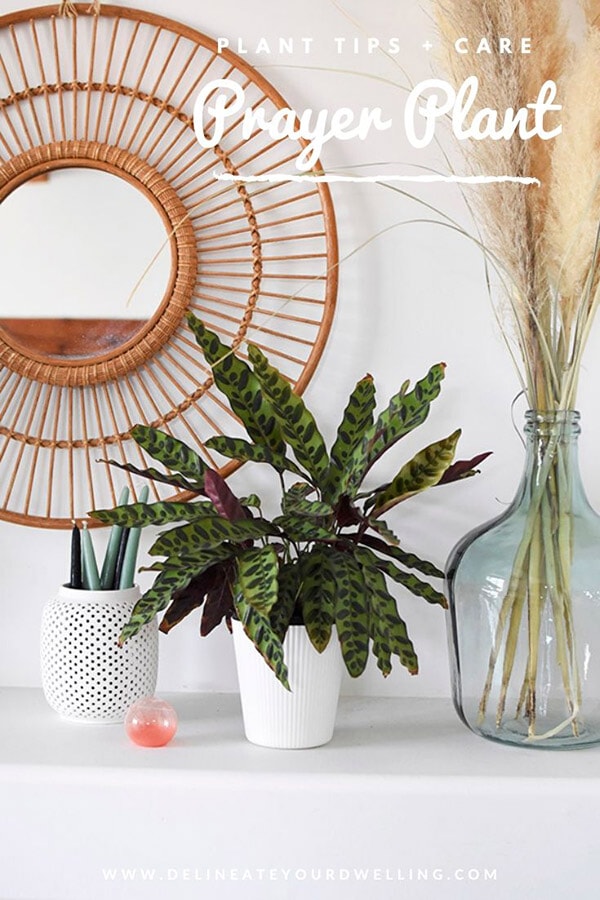Snake Plant Care
INSIDE : Learn the best plant tips for your Snake Plant care! Helpful plant ideas for Sansevieria – from watering needs, light requirements, grow big healthy Snake Plants.
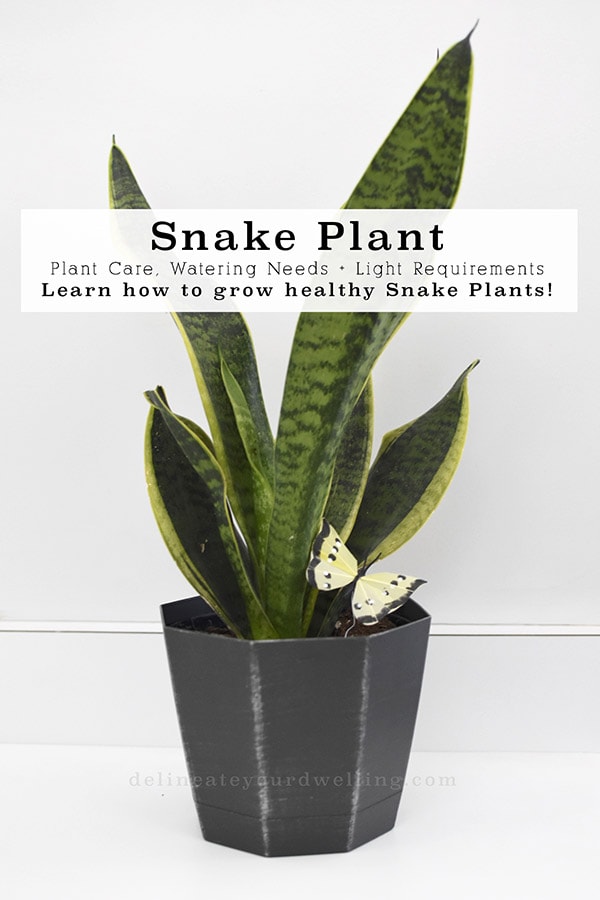
This post may contain affiliate links. See full disclosure here.
This post has been updated since it’s original publish date of January 2020.
It took me a few years to dive deeply into Sansevieria or Snake Plants.
Are Snake Plants popular?
According to a 2022 survey by the National Gardening Association, snake plants are the fourth most popular houseplant in the United States – right after succulents, cacti, and pothos. Snake plants are also popular in other parts of the world, such as Europe and Asia.
Here are some of the reasons why snake plants are so popular:
- Low maintenance: Snake plants are very easy to care for. They can tolerate low light, infrequent watering, and dry air. They are a great choice for people who are new to plants or who don’t have a lot of time to care for them.
- Versatile: Snake plants can thrive in a variety of conditions, making them suitable for a wide range of homes and offices. They can also be grown in a variety of containers, from small tabletop pots to large floor planters.
- Stylish: Snake plants have a sleek and modern appearance that can complement a variety of interior design styles. Their sword-shaped leaves can add a touch of greenery to any room.
- Air-purifying: Snake plants are believed to have air-purifying properties. They can remove toxins from the air, such as formaldehyde and benzene. This makes them a great choice for people who live in polluted areas or who have allergies.
Snake Plants are an amazing plant and really are having a resurgence in popularity. I went from having no snake plants to now having five and in the middle of propagating an additional one!
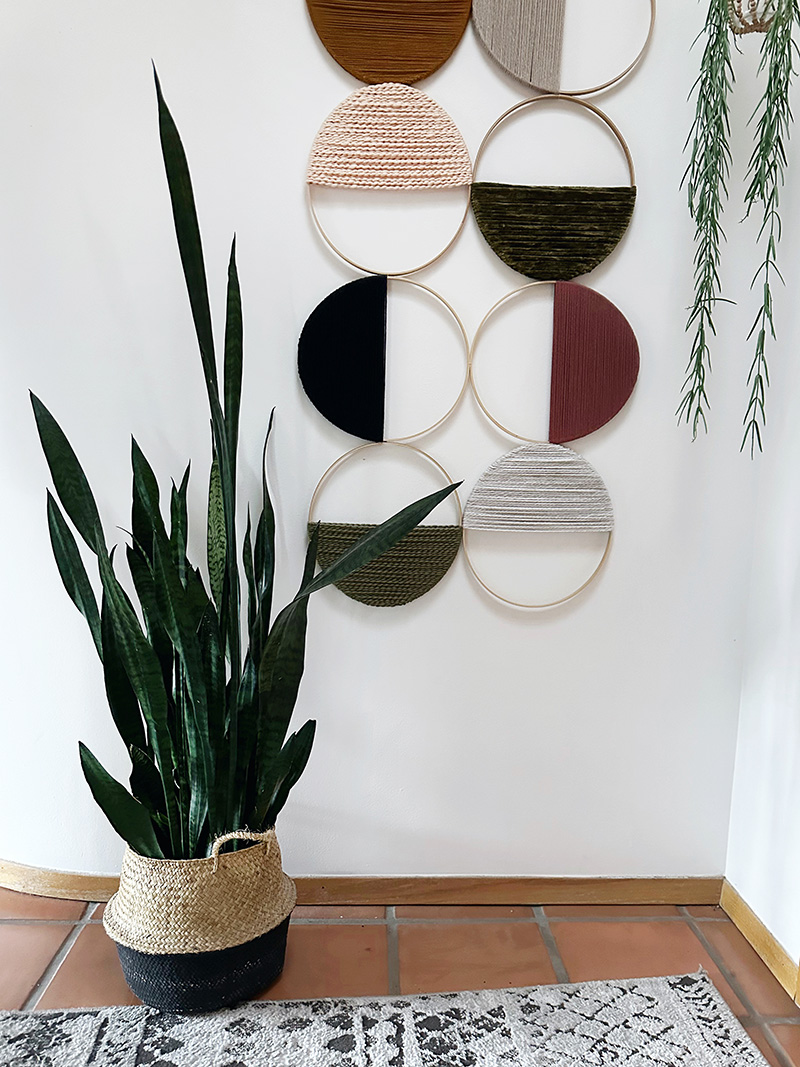
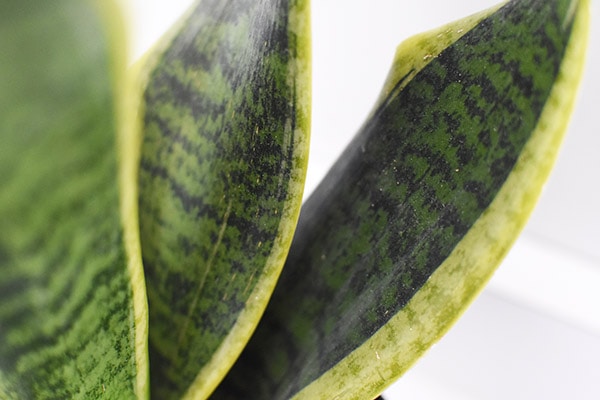
I have learned quite a bit about Sansevieria over the last year and I am so excited to share some of the important care tips I’ve found out about them.
How to care for Snake Plants
Snake Plants are one of the easiest house plants to take care of. This tall skinny leaved plant is very forgiving and perfect for the beginning plant owner. See my 11 Hard to Kill Houseplants post.
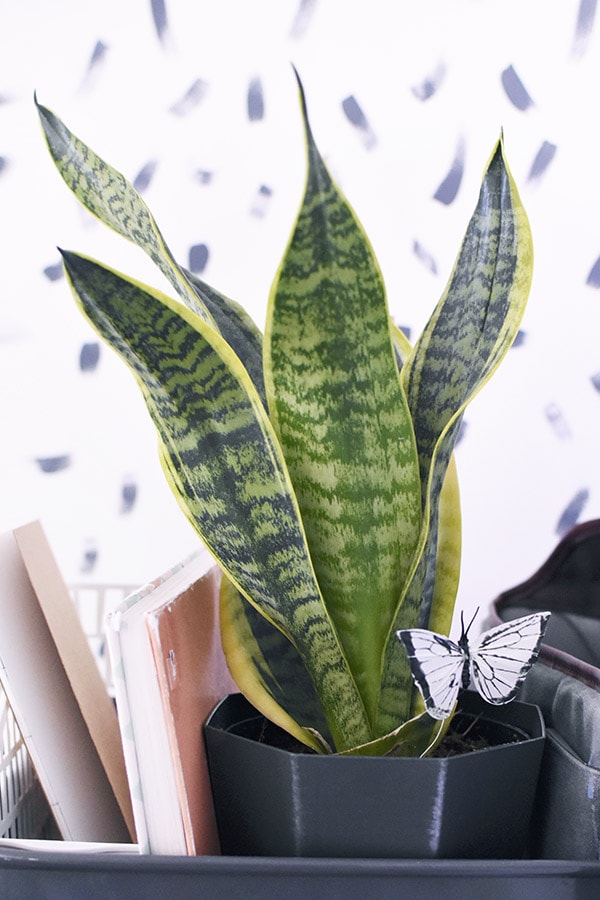
Sansevieria are evergreen perennials that can grow anywhere from eight inches to 12 feet high. Their leaves are more stiff, broad and upright than many typical indoor houseplants and come in a variety of green, yellow and white patterns.
Snake plants are most known for being able to survive in some of the worst growing conditions.
If you love plants like me or are wanting to become a better #plantlady, then you definitely need to check out my indoor houseplant care ebook, Happy Houseplants!
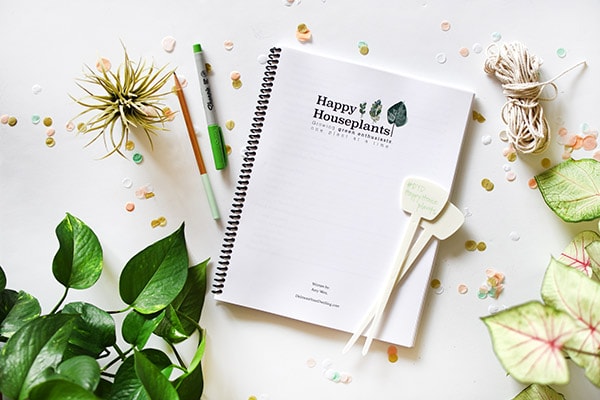
My Happy Houseplants ebook has an entire chapter on “how to not kill all the plants” and includes chapters on:
– A helpful checklist for the 6 steps to keep your plants alive + thriving.
– A deep dive on 7 trending “it” plants (like your finicky Fiddle Leaf Fig!)
-5 plant printables to hang in your home.
Buy it here.
How often should you water a Snake plant?
For being such an easy going plant, snake plant does have one downfall that can take your plant down… too much water.
Always make sure the soil of your plant is completely dry before watering it again.
They are drought tolerant and overwatering is the most common cause of death for snake plants.
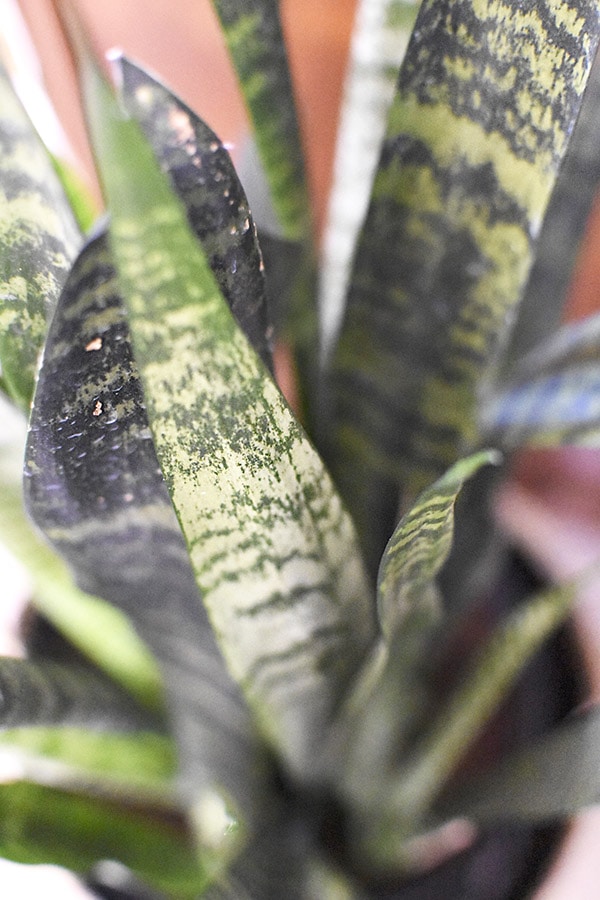
I am a huge believer in watering plants once a week (my watering day is Friday). However, in reality, on Friday’s I simply walk around to all of my plants and give them a check. Most plants need a weekly watering, however that is not the case for Snake Plants – I still give them a weekly check, though.
Water your Snake Plants about every other week. Soggy soil will cause root rot and can lead to the death of your plant. During winter, reduce watering to monthly, or whenever the soil is dry to the touch. Always err on the side of under watering with a snake plant.
How much light do Snake Plants need?
Even though Sansevierias prefer bright indirect levels, they also withstand higher AND low light levels – it’s not many plants that would make it no matter what light conditions you give them!
They will do well in most rooms of your home, but avoid placing them in direct sunlight, as this can scorch their leaves.
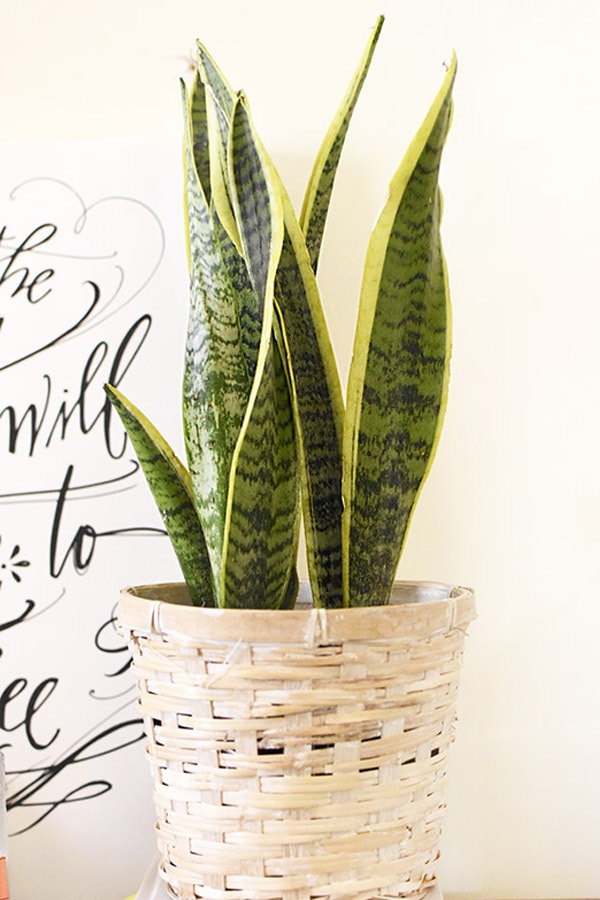
However, Mother-in-laws-tongue variety is best known for coping with more direct sun AND lower light conditions.
Check out my Best Sunlight Levels for Indoor Houseplants post.
What supplies are needed in growing Snake Plant?
Plant Moisture Meter | 6″ Pot Snake Plant | Pot | Fertilizer
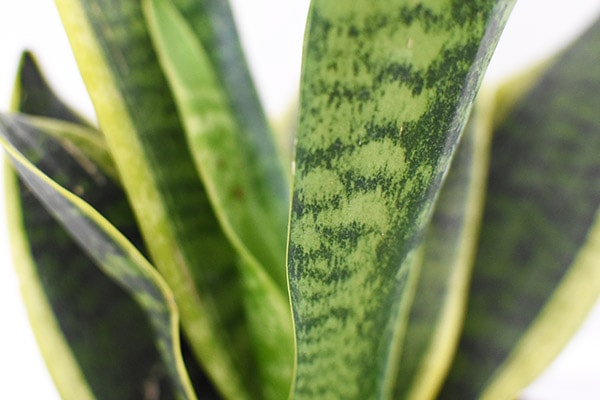
What are other names for Snake Plant?
Snake plant’s latin name is Sansevieria, but they have many unusual common names, including Mother-in-law’s tongue, Viper’s Bowstring Hemp and St. George’s sword.
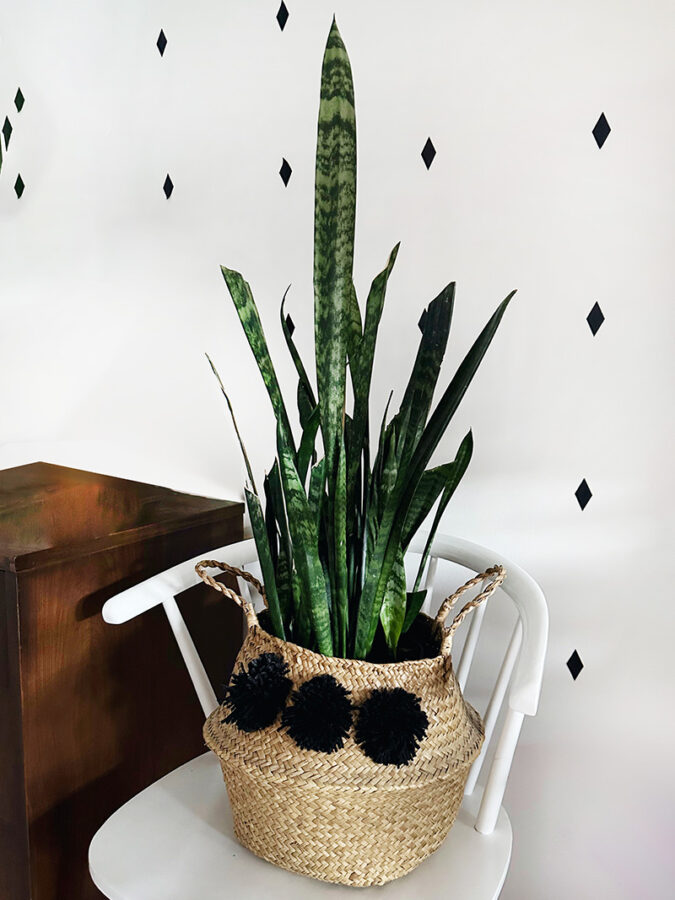
Are you in love with plants like me? You might like some of my Plant Crafts.
Here are some common issues that Snake Plants may have…
Why is my Snake Plant turning yellow?
Yellowing leaves can be a sign of overwatering, root rot, or nutrient deficiency.
- If you suspect overwatering, allow the soil to dry out completely between waterings.
- If you suspect root rot, remove the plant from its pot and inspect the roots. If the roots are black and mushy, trim them off and repot the plant in fresh soil.
- If you suspect nutrient deficiency, fertilize the plant once a month during the growing season with a balanced liquid fertilizer diluted to half strength.
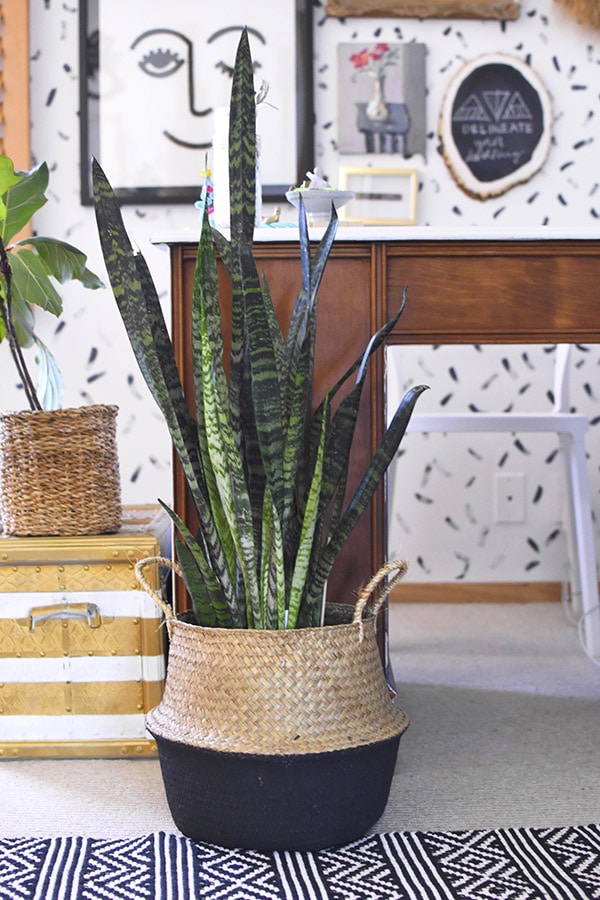
Is Snake Plant an indoor or outdoor plant?
In general, sansevieria is an indoor plant. However, in more warm humid climates Snake Plants can be grown outdoors, too. Be sure to check with your state’s regulations because some areas, have Snake Plant restrictions on outdoor planting due to their spreading nature.
Why are my Snake Plant’s leaves brown?
Brown leaves can be a sign of overwatering or underwatering. Allow the soil to dry out completely between waterings, and water deeply when the soil is dry.
Why is my Snake Plant leggy?
This can be a sign of low light or infrequent watering. If your plant is leggy, move it to a brighter location and water more often.
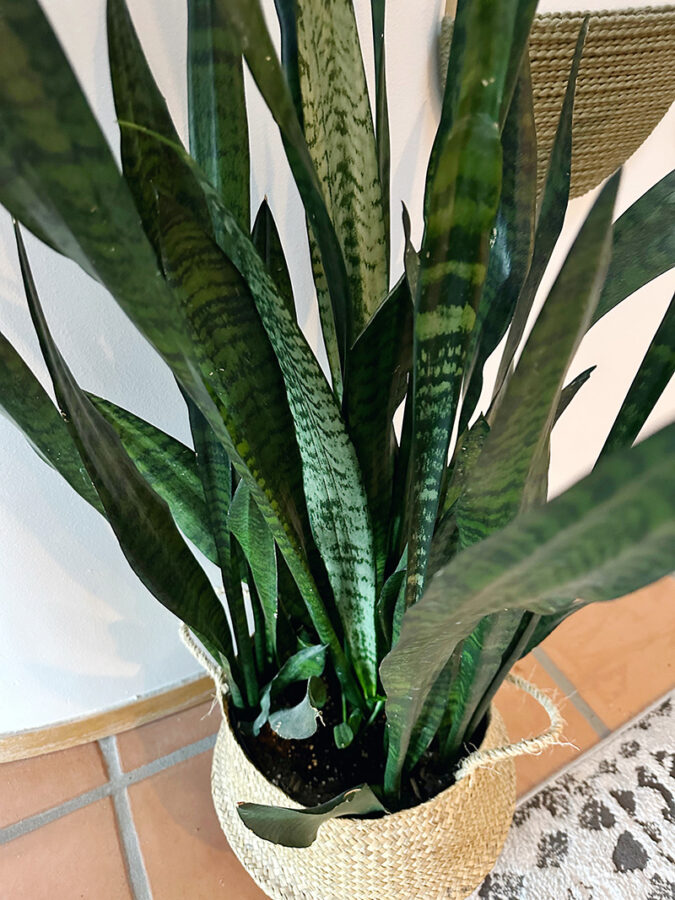
Why are my Snake Plant leaves falling over?
There are three main reasons why your Snake Plant leaves may be falling over in their pot, improper watering, too little light or your plant may need to be re-potted.
Droopy snake plant leaves often are because the plant is overwatered. Water snake plant only when the top 2 or 3 inches of soil is completely dry, which turns out to be about once every two weeks in the warmer months and once a month in the cooler.
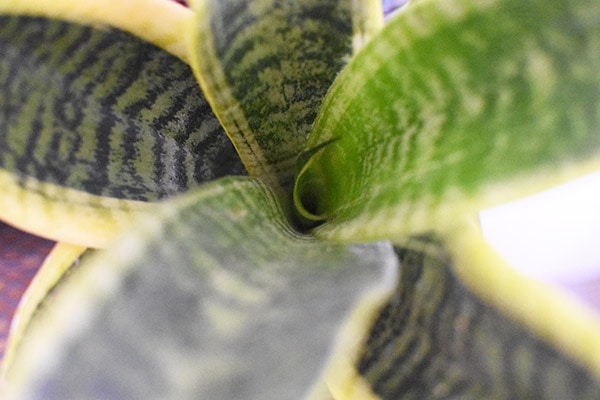
Although Snake plants can survive in very low light levels, leaves that are falling over can be an indication that the plant has been in excessive darkness for too long of a period.
One last reason your plant may have bent over leaves is that it has been in the same pot for too long and needs to be repotted. Snake plants typically can get root bound and need to be repotted only every three to five years.
How do you propagate Snake Plant?
Snake Plants are very easy to propagate, which make such fun plant gifts! Check out my how to wrap and gift plants + plant tag printables.
The easiest way to propagate Snake Plants is from their new shoots that emerge from the soil. As new leaves come up, they can be taken out of the soil and potted independently. They are rapid growers once established.
My preferred way to propagate is with leaf cuttings. Make sure your knife or hand pruner is clean and sharp. Once the leaf has been cut, let the leaf section heal for a couple of days before you place them in water. Within a few weeks, you should see a few small baby roots starting to grow. Wait until there are a few inches of new roots before transplanting into soil.
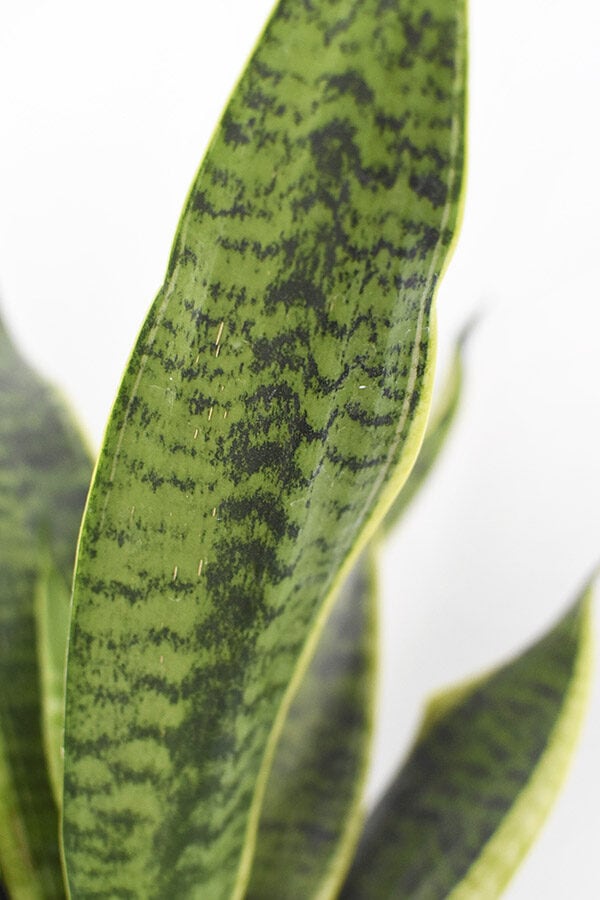
You should check out my Water Propagation for Plants post.
Do Snake Plants make the air cleaner in my home?
This makes me so happy, Sansevierias are one of the best plants when it comes to air purification. They filter out formaldehyde, xylene, toluene, and nitrogen oxides in the air. They do this at night time, which makes them great plants for the bedroom.
NASA conducted a study on Snake Plants and came to the conclusion that you need at least 15 to 18 medium-to-large size plants for a 1,800 square-foot home – so let’s get buying!
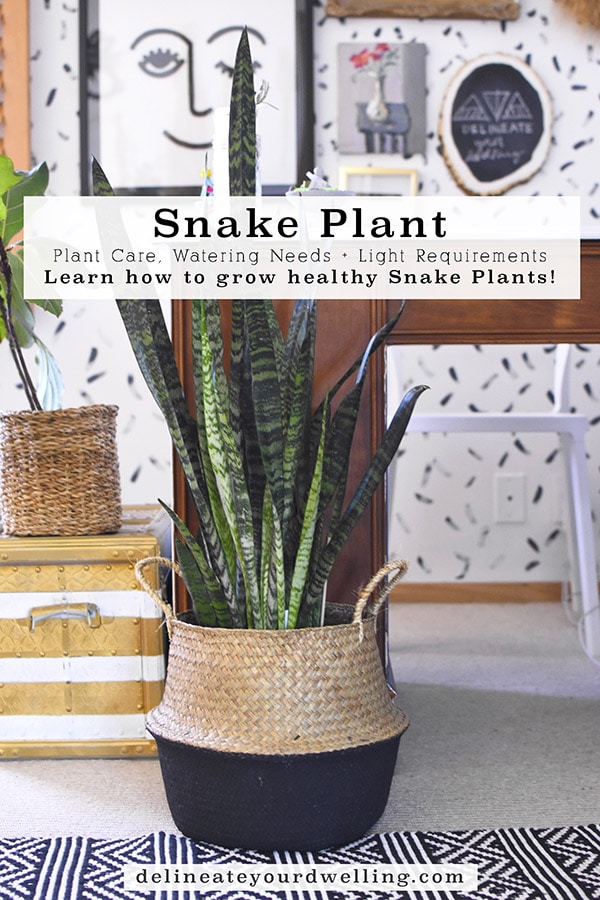
You might be interested in some of my other Plant Care posts:

